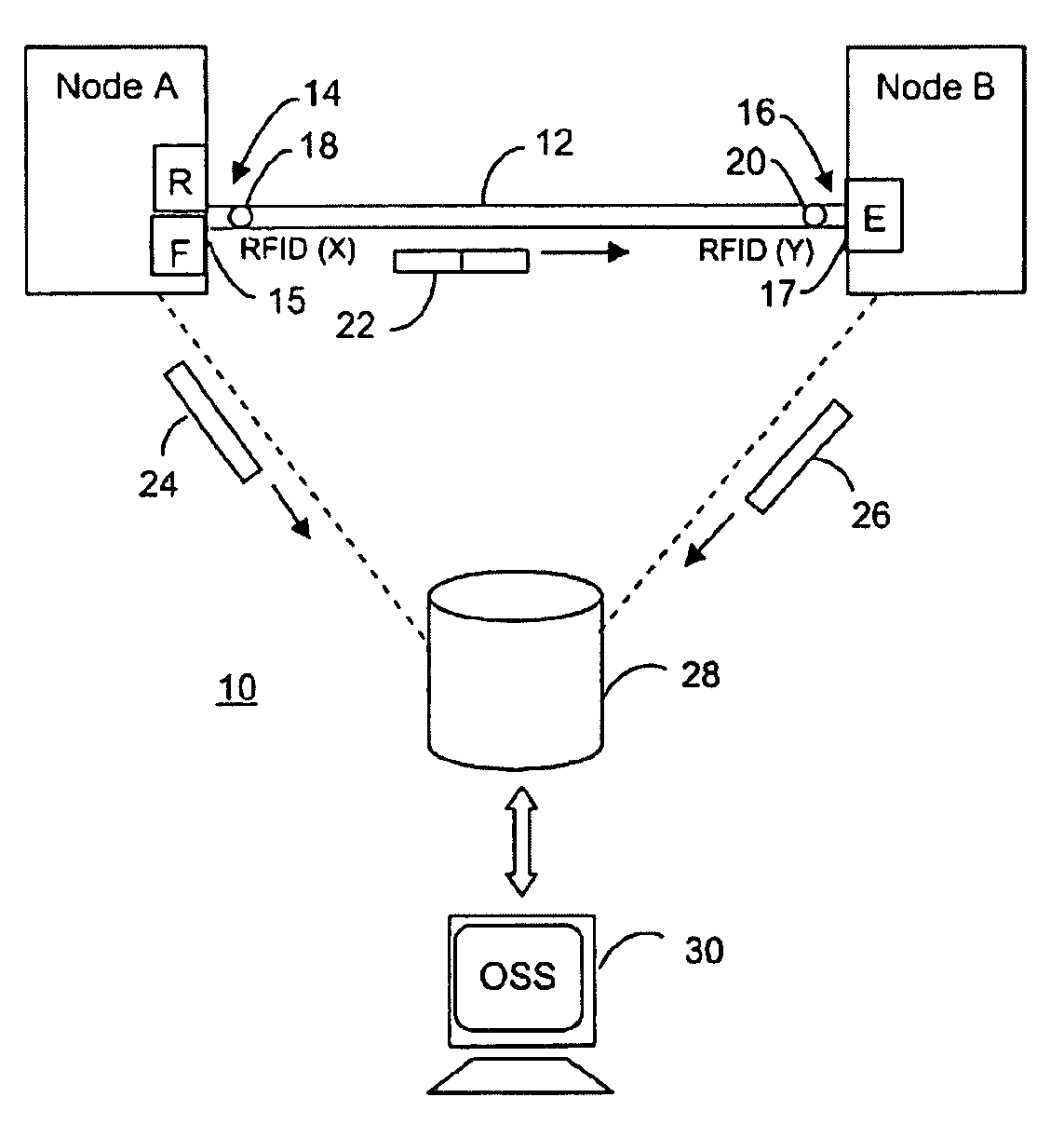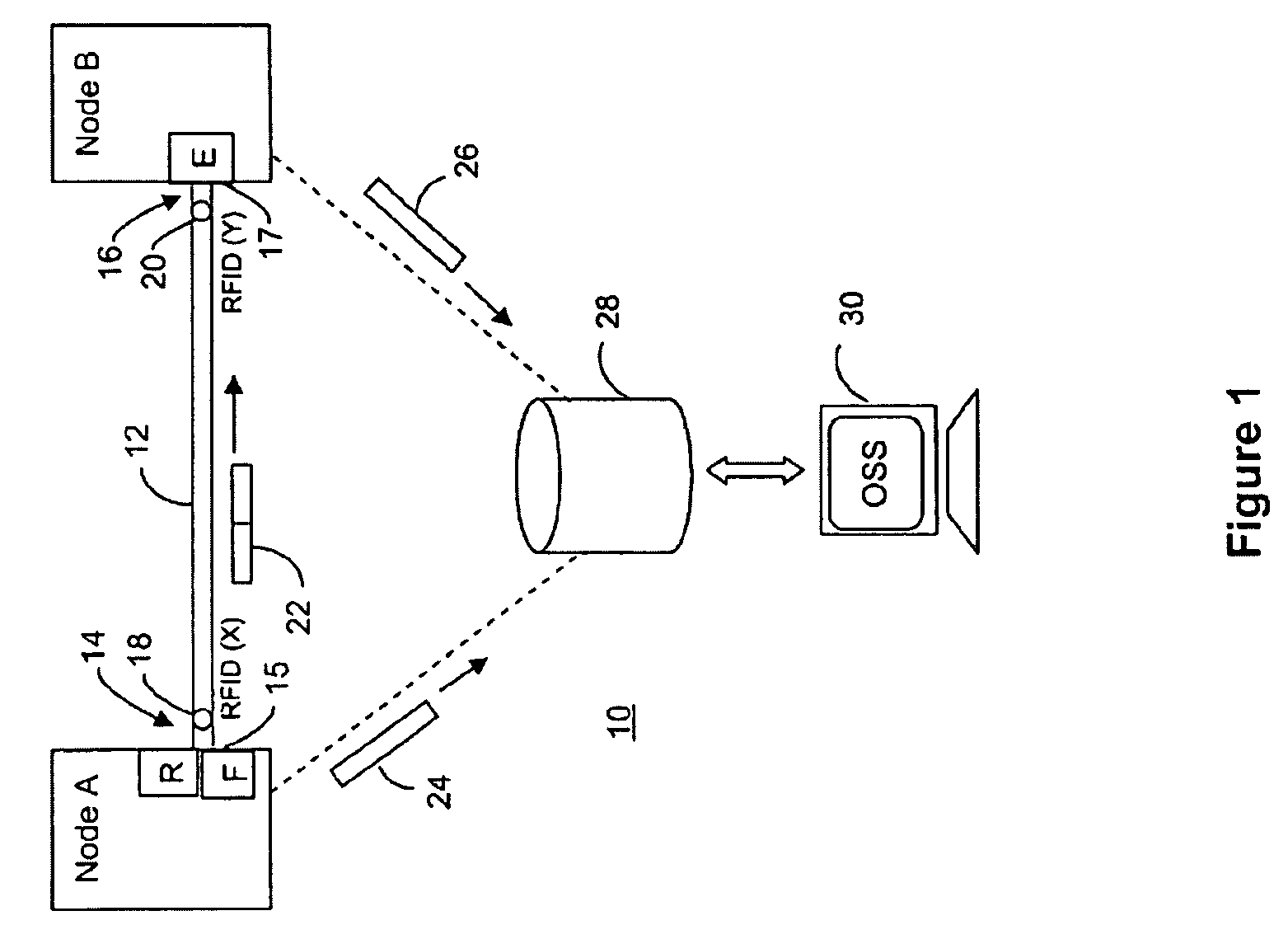Determining endpoint connectivity of cabling interconnects
a technology of cabling interconnects and endpoints, applied in the field of communication networks, can solve the problems of high cost of space in these environments, complex network deployment and upgrade challenges for providers, and the exact nature of interconnection errors is a very onerous and time-consuming task, so as to reduce the time needed to troubleshoot cabling errors
- Summary
- Abstract
- Description
- Claims
- Application Information
AI Technical Summary
Benefits of technology
Problems solved by technology
Method used
Image
Examples
second embodiment
[0028]A further enhancement would be to provide means in the formatter F of the near-end system for selective transmission of the near-end message 22 on a periodic, automatic or manual basis. The periodic mode would be useful for tracking the physical connectivity between systems of a communications network while the automatic mode could be useful for responding to any changes in said connectivity. It should be noted that having the near-end and far-end updates messages sent to the OSS 30 is not essential in that the OSS 30 or network management system could request the information contained in those messages from the those systems in some other format or sequence. For example the information of such messages could be requested singularly or in bulk, the latter being with respect to multiple ports and cables, or over multiple time periods, or both. Further, it should be noted that the OSS 30 or network management system is not essential to the operation of the invention, which point...
first embodiment
[0029]With reference to FIG. 2, the format and content of the messages and identifiers of the first embodiment will now be described in more detail. As shown in the figure, the first cable identifier X includes a first field 32 containing the unique endpoint label, Endpoint 1, and a second field 34 containing the unique cable label, Cable 1234. The endpoint label is unique to the cable and the cable label is unique to the network, or in the case where the cable connects subsystems of the same system, the latter may be unique to only that system. To avoid any confusion, preferably the cable label is unique to the premises of the network operator at which the near-end and far-end systems are installed. Likewise, the second cable identifier Y includes a first field 36 containing the unique endpoint label, Endpoint 2, and a second field 38 containing the unique cable label, Cable 1234.
[0030]Further with reference to FIG. 2, the near-end message 22 includes the cable endpoint identifier ...
PUM
 Login to View More
Login to View More Abstract
Description
Claims
Application Information
 Login to View More
Login to View More - R&D
- Intellectual Property
- Life Sciences
- Materials
- Tech Scout
- Unparalleled Data Quality
- Higher Quality Content
- 60% Fewer Hallucinations
Browse by: Latest US Patents, China's latest patents, Technical Efficacy Thesaurus, Application Domain, Technology Topic, Popular Technical Reports.
© 2025 PatSnap. All rights reserved.Legal|Privacy policy|Modern Slavery Act Transparency Statement|Sitemap|About US| Contact US: help@patsnap.com



